The Big Muff, a legendary pedal
Designed by Mike Matthews, founder ofElectro Harmonix in 1969, the Big Muff has become an icon of the effects pedal world. With its thick, bass-filled sound and deep midrange, it has seduced generations of guitarists. Unlike the Fuzz Face, another famous pedal, the Big Muff boasts exceptional sustain and a tone potentiometer offering great versatility. Officially classified as a distortion pedal, its two clipping stages give it fuzz-like saturation and compression.
The Big Muff uses silicon transistors and diodes, giving it great robustness and consistency. Its circuit, composed of four cascaded transistors, is appreciated by DIY enthusiasts for its ease of modification. Since its creation, over thirty versions have been released, each with its own sonic character.
To help you make sense of all the different versions of the Big Muff, we’ve put together a detailed article to help you find YOUR Big Muff!
The different versions of Big Muff
1. Big Muff Triangle (1969-1973) :

The Triangle Big Muff is the first version of the Big Muff series, produced from 1969 to 1973. Named for the triangular arrangement of its potentiometers, this pedal is known for its smooth, creamy sound, with a wide range of tones.
The Triangle Big Muff uses 2N5133 silicon transistors, which contribute to its unique character. Its simple yet effective design has set the standard for future distortion pedals. The Triangle is particularly appreciated for its extended sustain and rich harmonics, making it a popular choice among guitarists and bassists.
2. Ram’s Head Big Muff (1973-1977) :

The Ram’s Head Big Muff, produced from 1973 to 1977, is the second major version of the Big Muff. It is often considered one of the most sought-after versions, thanks to its distinctive sound and its association with famous artists such as Pink Floyd’s David Gilmour.
The Ram’s Head features deeper mids and more prominent highs than the Triangle. This pedal also uses 2N5133 transistors, but with a slightly modified configuration, giving it a more aggressive, cutting tone. The case features a distinctive ram’s head logo, hence the name.
3. 𝜋 (Pi) Big Muff (after 1970):
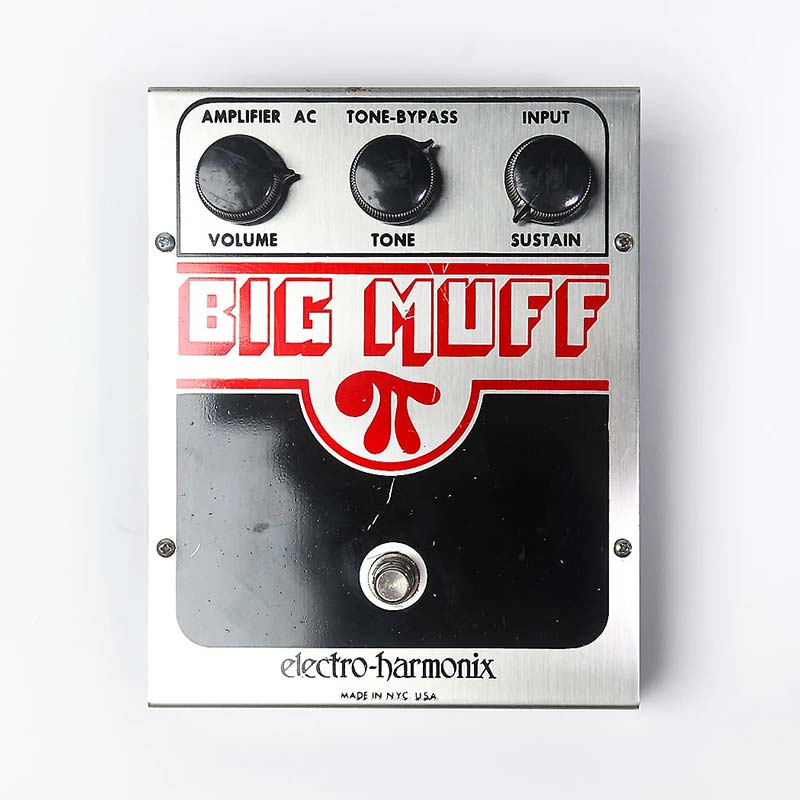
The Big Muff Pi, often simply called Pi, is the standard version produced in the late 1970s. This version is known for its sturdy metal casing and simple design.
Its sound is rougher and more abrasive than that of previous versions, with pronounced bass and sharp highs. The Big Muff Pi uses 2N5088 transistors, which give it faster response and more pronounced distortion. This pedal is appreciated for its ability to cut through a mix, making it a popular choice for powerful rhythms and punchy solos.
4. Op-Amp Big Muff (1978-1980)

The Op-Amp Big Muff, produced from 1978 to 1980, is a unique version of the Big Muff series. Unlike the other models, which use transistors, this pedal uses op-amps to create its characteristic distortion.
This gives it a sharper, more aggressive sound, with a more present midrange and incredible sustain. The Op-Amp Big Muff is often associated with Billy Corgan of the Smashing Pumpkins, who used this pedal to achieve the distinctive sound of the “Siamese Dream” album. The distinctive orange casing and biting sound make this pedal a legend among alternative rock musicians.
5. Civil War Big Muff (1992-1994)

The Civil War Big Muff takes its name from the colors of its case, blue and gray, reminiscent of American Civil War uniforms. This version was manufactured in Russia by Sovtek and is known for its softer, more musical sound compared to other Russian versions.
It offers generous lows and shallower mids, making it ideal for rich solos and robust chords. It’s particularly prized for its clarity and articulation, while retaining the warmth and richness typical of the Big Muff.
6. Green Russian Big Muff (1994-2000)

Sovtek’s Green Russian is famous for its massive bass and heavy, grainy sound. It is distinguished by a more compressed, aggressive sound than its American counterparts.
Its robust construction and specific components give it a unique sound, appreciated by bassists and stoner rock guitarists alike . The Green Russian model has become legendary for its ability to deliver a dense, punchy sound, making it a preferred choice for musicians seeking powerful, pervasive distortion. The Green Russian version has gained a cult following for its association with artists such as Jack White and Dan Auerbach.
7. Black Russian Big Muff (1998-2009)

The Black Russian is similar to the Green Russian in terms of circuitry, but comes in a more practical and resistant black housing. It retains the sound characteristics of the Green Russian, with deep bass and high gain.
The Black Russian is often considered a reliable and durable model, offering thick, rich distortion, while being more affordable than some vintage versions.
8. NYC Reissue Big Muff (2000)

The NYC Reissue Big Muff Pi, introduced in 2000, is a reissue of the classic 1970s model, made in New York. It aims to faithfully reproduce the distinctive sound of the original Big Muff, with its long sustain characteristics and rich harmonics.
The case of this pedal features the iconic red and black design, instantly recognizable. This version is appreciated for its ability to deliver a smooth yet powerful distortion sound, ideal for expressive solos and heavy rhythms. The NYC Reissue is also known for its robustness and reliability, making it a durable choice for professional and amateur musicians alike.
9. Little Big Muff (2006)

The Little Big Muff Pi is a compact version of the classic Big Muff, introduced in 2006. It retains the essential elements of the Big Muff sound, while being smaller and more practical for modern pedalboards.
This pedal offers a rich, saturated sound, with deep bass and extended sustain, similar to that of the NYC Reissue version. The main advantage of the Little Big Muff is its reduced size, making it ideal for musicians with limited pedalboard space. Despite its size, it makes no compromise on sound quality, offering the thick, warm distortion typical of the Big Muff.
10. Bass Big Muff (2008)

The Bass Big Muff Pi, introduced in 2009, is specially designed for bassists. Inspired by the classic Big Muff Pi circuit, it is modified to meet the needs of bassists, offering deeper bass and a frequency response adapted to low-frequency instruments.
This pedal features three operating modes: Normal, Dry and Bass Boost. Normal mode delivers classic Big Muff distortion, Dry mode blends the original signal with distortion to preserve note clarity, and Bass Boost mode adds extra bass for an even heavier sound. Bass Big Muff Pi is particularly appreciated for its ability to deliver powerful distortion without sacrificing bass note definition and presence.
11. Tone Wicker Big Muff (from 2009)
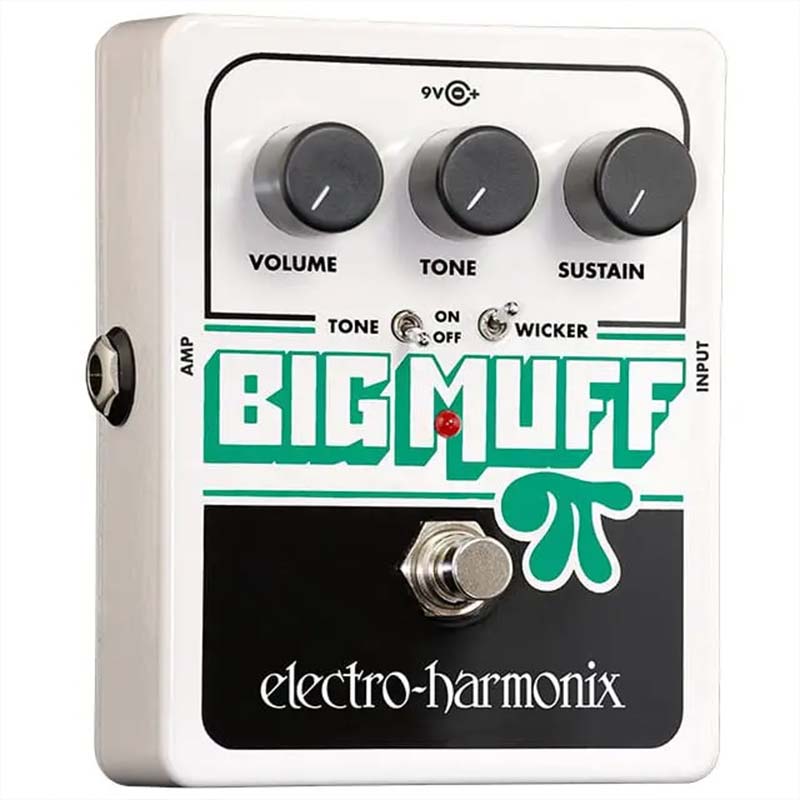
The Tone Wicker Big Muff is a modernized version of the classic Big Muff, introducing additional tone options. It features two additional switches : a “Tone” switch to activate or deactivate the tone circuit, and a “Wicker” switch to add high harmonics.
This pedal allows musicians to customize their sound, offering unprecedented sonic flexibility. The “Tone off” mode gives a more open and raw sound, while the “Wicker” mode adds brilliance and definition.
Vintage Big Muff: why are they so expensive and sought-after?
Vintage Big Muff guitars are highly prized for their distinctive sound quality and the unique characteristics of each version. For example, the Triangle Big Muff is known for its smooth, creamy sound, while the Ram’s Head offers deep mids and clear highs, ideal for distinct solos. These pedals use vintage components, often specific and not reproduced today, giving them an inimitable sound. The transistors and operational amplifiers of the original models add a unique touch to each pedal, amplifying their value.
Big Muff’s association with legendary artists has also contributed to its renown. Musicians like David Gilmour of Pink Floyd and Billy Corgan of the Smashing Pumpkins popularized these pedals by using them on iconic albums, adding emotional and historical value.
Rarity also plays a crucial role in the high demand for these pedals. Models like the Triangle and Ram’s Head were produced in limited quantities, and finding examples in good condition with original components is increasingly difficult. This rarity increases their value as collectors’ items, making vintage Big Muff pedals sought-after treasures for vintage enthusiasts.
However, it has to be said that some prices can seem rather irrational, fueled by speculation rather than real sonic superiority. Although vintage Big Muff pedals have an undeniable charm, the difference in sound between a vintage pedal and a modern reissue can sometimes be subtle, even imperceptible to many listeners. Some buyers pay exorbitant prices more out of fascination with the history and myth surrounding these pedals than for any tangible sonic improvement. The speculation and fad surrounding these collector’s items can therefore sometimes create discrepancies between the price paid and the real added sonic value, illustrating a dynamic where myth and reality merge.
Other brands and their Big Muff versions/clones
Many brands have tried to recreate or improve the Big Muff, each adding their own personal touch. Among the most notable:
1. Wren and Cuff Tri Pi 70
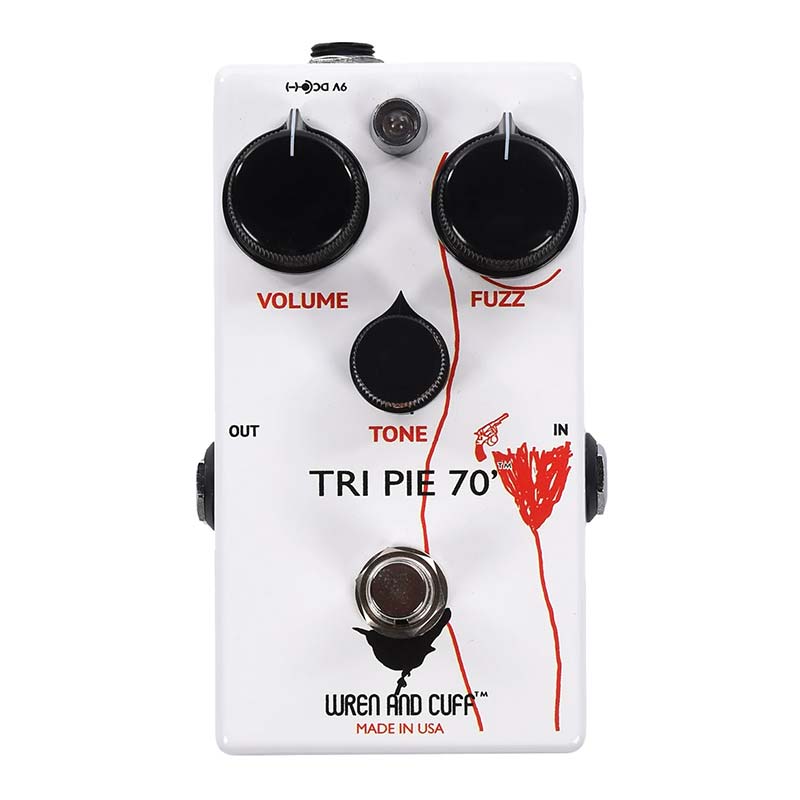
The Wren and Cuff Tri Pi 70 is a distortion pedal that faithfully recreates the sound of the Big Muff of the ’70s. Designed with carefully selected silicon transistors, this pedal delivers rich, harmonic distortion with incredible sustain.
It’s renowned for its ability to capture the nuances of guitar playing, offering a wide range of sounds from gentle distortion to extreme saturation. The robust casing and high-quality components ensure long life and reliability on stage.
2. EarthQuaker Devices Hoof Fuzz

Visit EarthQuaker Devices Hoof Fuzz is a pedal that combines germanium and silicon transistors to deliver unique, versatile distortion. Inspired by the Big Muff of the ’70s, this pedal stands out for its ability to deliver a sound that’s both warm and aggressive.
Tone and Shift controls allow you to precisely sculpt the sound, offering options ranging from velvety distortion to more abrasive textures. Ideal for guitarists seeking a distinctive, adaptable fuzz.
3. Stomp Under Foot Civil War

The Stomp Under Foot Civil War is a distortion pedal inspired by the “Civil War” version of the Big Muff from the ’90s. It’s appreciated for its tonal balance, offering solid lows, clear mids and brilliant highs.
This pedal is ideal for lilting solos and powerful rhythms, perfectly capturing Big Muff’s characteristic “Civil War” era sound. The sturdy case and intuitive design make it a durable choice for demanding musicians.
4. Way Huge Swollen Pickle MkIIS

The Way Huge Swollen Pickle MkIISis a fuzz pedal inspired by the Big Muff, but with added versatility.
With extensive controls for sustain, filter and compression, this pedal allows guitarists to sculpt their sound with great precision. The Swollen Pickle is renowned for its ability to deliver extreme fuzz tones while retaining exceptional clarity, making it ideal for a wide range of musical genres.
5. JHS Muffuletta

The JHS Muffuletta is a unique pedal that integrates five classic Big Muff circuits and one original JHS circuit. This versatile pedal allows guitarists to choose between sounds from different Big Muff eras, including the Triangle, Ram’s Head, Civil War, Russian and Pi models.
The Muffuletta is a real time machine for fuzz enthusiasts, offering unrivalled sonic flexibility in a compact format.
6. Blackout Effectors Musket Fuzz

Blackout Effectors Musket Fuzz is a versatile distortion pedal that combines classic Big Muff features with modern functionality.
With controls for pre-gain, focus and midrange, this pedal allows guitarists to customize their sound in depth. The Musket Fuzz is appreciated for its ability to produce thick distortion and piercing solos, while offering remarkable sonic flexibility.
7. ThorpyFX Fallout Cloud

The ThorpyFX Fallout Cloud is a high-end fuzz pedal inspired by the Big Muff. It’s built with military-grade components for exceptional durability and reliability.
The Fallout Cloud offers rich, detailed distortion, with controls for gain, volume, tone and fuzz, allowing precise customization of the sound. This pedal is particularly appreciated for its balanced sound and its ability to stand out in a mix.
8. Wampler Velvet Fuzz
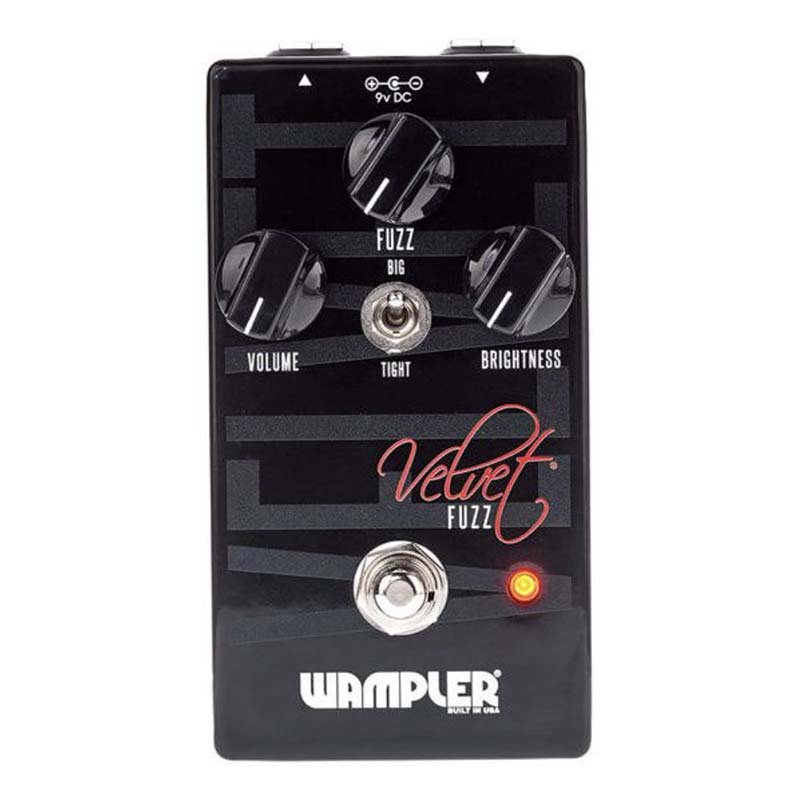
The Wampler Velvet Fuzz is a pedal that aims to capture the essence of the Big Muff sound while offering modern flexibility. With Big and Tight modes, this pedal lets you switch from a broad, saturated fuzz to a more focused, punchy sound.
Velvet Fuzz is renowned for its ability to retain exceptional clarity even at high distortion levels, making it an excellent choice for guitarists seeking a versatile, refined fuzz.
9. Basic Audio Tri/Ram

The Basic Audio Tri/Ram is a fuzz pedal that combines the features of the Big Muff’s Triangle and Ram’s Head circuits. It offers a rich palette of sounds, from velvety-smooth fuzz tones to more aggressive distortions.
The controls allow precise adjustment of the sound, making this pedal ideal for guitarists looking to explore different fuzz textures while retaining a distinctive character.
10. Skreddy Pedals P19

The Skreddy Pedals P19 is a fuzz pedal that takes its inspiration from the Big Muff sound while offering modern enhancements. Designed to capture the sound of Big Muff’s “Civil War” period, this pedal offers rich, harmonic distortion with excellent sustain.
The controls allow precise customization of the sound, making this pedal ideal for expressive solos and powerful rhythms.
The Big Muff is more than just an effects pedal; it’s a legend in the music world. Each version has its own unique characteristics, meeting the needs and preferences of generations of guitarists. Whether for their unique sounds, their history or their rarity, Big Muff pedals, vintage or modern, continue to inspire and captivate musicians the world over.
Photo credits : Electro-Harmonix




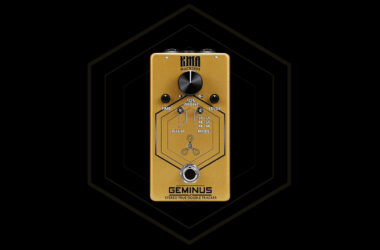



 Electro Harmonix Bass Big Muff Pi
Electro Harmonix Bass Big Muff Pi









 EarthQuaker Devices Hoof V2
EarthQuaker Devices Hoof V2
 Way Huge Swollen Pickle MK IIS
Way Huge Swollen Pickle MK IIS
 JHS Pedals Muffuletta
JHS Pedals Muffuletta
 ThorpyFX Fallout Cloud Fuzz
ThorpyFX Fallout Cloud Fuzz
 Wampler Velvet Fuzz
Wampler Velvet Fuzz


